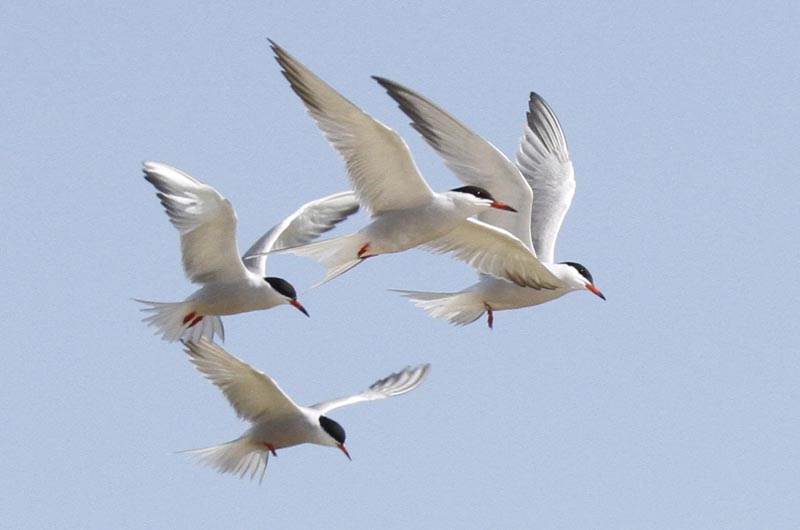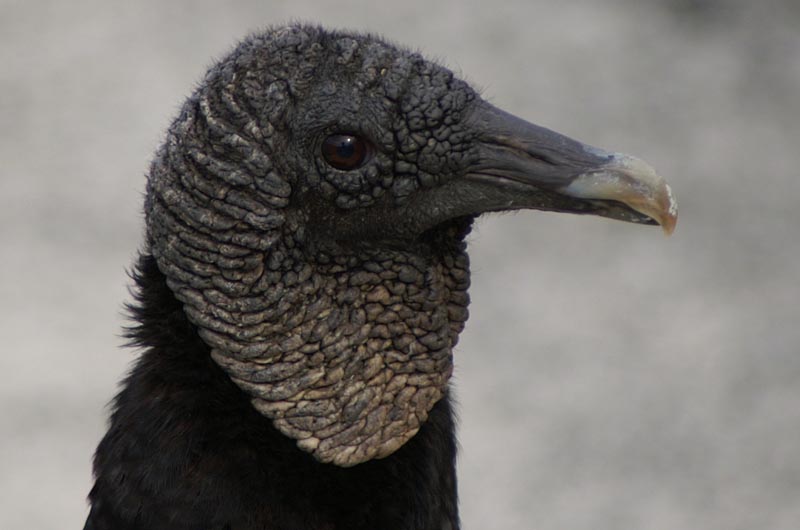Do you still have Carolina wrens in your yard? They have been a common breeding species for as long as I can remember, and their loud clearly whistled two or three syllable song is easy to hear. Allan Keith has noticed fewer wrens around after this winter; his hypothesis is that this winter’s deep snow buried many of the thickets wrens depend on for cover, so their population has declined.
I have always had these perky wrens around my house, and at this time of the year they should be very vocal songsters and thus easy to detect. But on the morning of May 5, only one individual was singing, probably the same individual we saw at our feeder through the winter. Readers, we need your help: document a pattern by telling us whether your wrens are either more or less abundant than they were last year.

At long last spring migration is in full gear. Not only does it feel like spring, but there are also a lot of species that have just arrived on the Island this week.
Terns are perhaps the most interesting to me, as hearing them and watching them feed is such an integral part of going to the beach. Lee Domont reports the first common terns of the season on Haystack Island in Sengekontacket Pond on April 30. She keeps records about these things, and reports that they arrived a day earlier than they did last year. Allan Keith also found some common terns at Eel Pond on May 3 and Caitlin Borck observed both common and least terns on Norton Point on May 4.
Equally exciting is Ron Domurat’s report of a laughing gull on Norton Point on May 4.
Ken Magnuson’s sighting of an American golden plover in a Katama grassland on April 30 is unexpected. While we get large numbers of them in the fall, they are rare in the spring since most of them migrate northward through the central portion of the country. The website ebird reports only three sightings on the Atlantic coast this year, in April and May, none closer to us than southern New Jersey and Delaware.
David Stanwood observed a black vulture flying overhead near the Hoft farm on Lambert’s Cove Road on May 4. It is only a matter of time before this species breeds on the Vineyard — keep an eye out; maybe this is the year!
Lots of songbirds have also arrived. Ken Magnuson heard a common yellowthroat singing at the Edgartown Golf Club on April 29 and 30, although he was not able to find the bird. He was able to observe chimney swifts flying around the golf course on May 3. That same day he found ovenbird, northern parulas, prairie warbler, and three black and white warblers at Waskosim’s Rock, and an eastern kingbird at the Farm Institute. Spring migrants all.
Luanne Johnson reports both prairie warblers and American redstarts singing at Cedar Tree Neck on May 5. Also on that day, Wendy Culbert observed prairie warblers near the Agricultural Hall.
On May 1, at the Head of the Lagoon, Allan Keith found a palm warbler that was very yellow from stem to stern on its undersides. Finding any palm warblers in the spring is unusual; this bright yellow individual will soon be nesting in eastern Canada. This differs from the palm warblers we see in the fall, which have mostly dull gray undersides and are part of a western population.
While the following brightly colored birds have been reported in previous columns, they continue to draw comments as they turn up in more places. Baltimore orioles arrived at Sioux Eagle’s yard on May 3. Penny Uhlendorf had two chattering away and partaking of the proffered jelly that day. The next day they showed up at Diane Emin’s grape jelly, as well as in Oak Bluffs at Matt Pelikan’s and Bill Jones’s homes.
Rose-breasted grosbeaks showed up at Charlie Kernick’s yard on April 30. And I heard one calling — it sounds like a rusty hinge — near my yard on May 2. Matt Pelikan reminds us that as recently as the late 1990s this species was rare, but now they are routine spring migrants and their breeding population is increasing.
Indigo buntings also remain in the news. Meg Spokus found one in Bold Meadow on May 1, and Sharon Gamsby also observed one that day. Charlie Kernick had one at his feeder on May 2, and on May 3 he observed a male driving a sparrow away from that same feeder. We had a spring influx of these buntings about 10 years ago, after which they seemed to establish a small breeding population. But there have been no confirmed nestings in recent years, perhaps their abundance this spring may re-establish a breeding population.
Ruby-throated hummingbirds have been reported by Nelson Smith, Judith Searle, Joyce Look, Charlie Kernick, Sioux Eagle and Catherine Deese.
Connie Alexander heard a great horned owl calling at her Vineyard Haven home on April 29.
Penny Uhlendorf reports five purple finches and two red-breasted nuthatches showed up at her feeder on April 30, joining the more usual chickadees, tufted titmice, cardinals, pine warblers, American goldfinches and house finches. And she still hears our winter resident white-throated sparrows, which are now singing.
Tim Johnson observed willets at Bend in the Road marsh on April 29. And on May 1 Luanne Johnson found five willets along the north shore near Cedar Tree Neck. She also reports that the breeding willets she banded have not shown up yet.
Dick Knight observed a swamp sparrow that was stunned when it flew into a window on April 28. The good news is that it recovered and flew off.
Finally, Allan Keith reports that Menemsha’s green heron — often fishing in the small pond behind the Home Port — is back on May 3. Meanwhile, 18 harlequin ducks are still hanging around near Squibnocket Beach.
There are lots of birds around, so please get out looking for them, and be sure to report your bird sightings to birds@mvgazette.com.
Robert Culbert leads guided birding tours and is an ecological consultant living in Vineyard Haven.





Comments (2)
Comments
Comment policy »